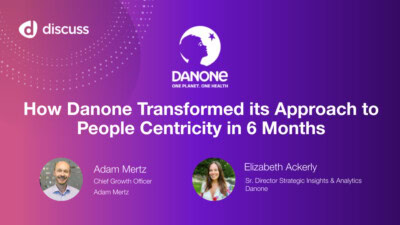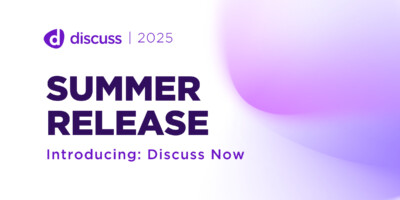Online Qualitative Research Basics

What is Online Qualitative Research?
In essence, online qualitative research is a digital research method that involves collecting the thoughts, opinions, attitudes and impressions that people give regarding products or services that they share with researchers — most commonly through live, virtual discussions.
Qualitative research conducted through online conversations can involve focus groups, in-depth interviews (IDIs), self-directed journal entries, market research online communities (MROCs), self-captured surveys and other forms of qualitative feedback.
See our glossary of research terms for more information about qualitative research methods.
In a world of big, quantitative data that only captures actions and behaviors (the “what”), qualitative research and data is distinguished by its focus on the “why” of those actions and behaviors.
Quantitative research has its place, as it can generate large scale, reliable insights regarding cause-and-effect relationships. Traditionally, insights teams have split this research, with 80% quantitative and 20% qualitative analysis. Times have changed, however, with researchers now conducting a 50/50 split on quantitative and qualitative research.
While qualitative research methods have historically taken place in-person or via phone conversations, the online research approach offers many significant advantages in terms of saving time and resources compared to more traditional methods. For example, instead of spending time and money on recruitment, travel logistics and costs, online qualitative researchers can utilize virtual recruitment hubs and streamline workflows to complete projects in record time.
Online qualitative research also provides greater access and convenience for participants, researchers and even observers. Through online customer feedback sessions, researchers are now able to connect with people in more difficult-to-reach locations and during times that fit into their lifestyles better. By removing barriers to access respondents where they are, online qualitative research has become a great equalizer in terms of sourcing more diverse consumer voices.
Many organizations, for example consumer packaged goods businesses, find that the ability to access a window into a consumer’s home and lifestyle provides a more intimate perspective on buying motivations and decisions. This insight advantage can give critical context to researchers that can then benefit everything from R&D, concept and product development, packaging development, customer closeness, empathy and more.
The rise of online qualitative research platforms
Several persistent market research trends have contributed to the rise of online platforms for conducting sessions with consumers. Even before the global pandemic ushered in a digital transformation of the way people connected, worked and shopped, online market research tools were evolving to not only replicate in-person interactions, but to add more value to the respondent experience.

Like telehealth and online education, online market research platforms provide a range of both live and asynchronous ways to connect with people. Leveraging a smart video, qualitative research platform like Discuss.io also automates workflows for everything from recruitment to scheduling, privacy and security compliance, to insight extraction, reporting and sharing.
Online market research platforms have also evolved to feature AI-driven functions, such as Discuss.io’s Augmented Insights — a suite of tools like Sentiment Analysis and Theme Finder, that are driven by Natural Language Processing (NLP). As NLP expands to other languages beyond English and in primarily western markets, more agile technology, harnessing NLP, will evolve to serve researchers around the world.
Another effect that the global pandemic had on people is mobile phone use. In the US, mobile use increased by 31 minutes per adult on average after the pandemic, and nearly a third of all media time was spent on mobile devices.
For qualitative researchers looking to better understand mobile user experiences (UX), online research platforms such as Discuss.io offer mobile screen sharing functionality in order to truly see what the consumer sees in their consideration, comparison and purchasing stages.
To see how Unilever leveraged the Discuss.io mobile screen share app to understand the user journey, in this case for shopping on Amazon and other e-commerce sites, view the video case study.
How to conduct online qualitative research now
As previously noted, a lot has changed in the past few years in terms of online adoption of qualitative research methods. With so many new platforms and applications to choose from, it can be difficult to navigate which options are best suited for insights, CX and UX teams — whether for in-house or agency researchers.
Before beginning any online qualitative research project, it is critical to find a solution that meets the following criteria to stay competitive in an increasingly unpredictable business environment:
1. Make research agile
Traditional methods of qualitative research can no longer keep up with the dynamic nature of modern consumer demands. Leading insights teams take a cue from agile software development, looking at customer and user feedback as part of an iterative concept and product development process. Agile research methods imply that a customer feedback loop is baked in to the process, leveraging the voice of the consumer (VoC) to provide directional guidance. In addition, CX, UX, and insights teams cite their ability to include stakeholders in this process as among the most helpful parts of development and iteration.
Agile market research technologies offer the following benefits:
-
-
- Enable short, iterative market research sprints
- Provide a full suite of services (recruitment, moderation translation, etc.)
- Tech that supports engaging sessions that captures ‘aha’ moments quickly and easily
- Embedded analytics capabilities that cut the time to insights in half
- Creation and sharing of experience highlight reels that enables more informed decisions quicker**Teams that use qualitative research platforms like Discuss.io to these ends often claim they reduce their time-to-market by as much as one full fiscal quarter as a result of features such as Augmented Insights, easily shareable highlight reels, a respondent management hub and other benefits.
-
2. Mind the gap in security
Privacy and security compliance isn’t just a concern for healthcare and financial sectors. While researchers that work in highly regulated, privacy-forward industries or countries must be mindful of such policies, managing hundreds if not thousands of people’s personally identifiable information (PII) online should be handled with great care no matter which sector a researcher is in.
As in-person qualitative research accelerated its migration online in the past few years, managing respondent data has become cumbersome — a patchwork of solutions across multiple databases can become unwieldy if not well organized. That is where online insights platforms have filled in the gap in handling PII.
Online qualitative researchers should look for a workhorse of an insights platform to streamline their respondent management workflow, with features that provide:
- GDPR Compliance for handling Personally Identifiable Information (PII)
- NDAs for pre-release products or services – especially helpful when product placement or pre-session homework is involved
- Consent forms for pre-session work or in-session conversations to be used for marketing or promotional purposes
Discuss.io’s platform provides all of the above, more information can be found here.
3. Democratize insights
With online qualitative research, technology has advanced to enable the voice of the customer to really drive outcomes across an organization. Yet the voice of the consumer (VoC) is only powerful if it’s being heard across all levels of the business.
Researchers should explore solutions that provide easily shareable video clips and highlight reels to bring their consumer research to life. Giving multiple stakeholders direct access to hearing people’s voices can validate hypotheses, illuminate key themes and sentiments, and inspire action to all members of an organization.
What’s more, when CX, UX and insights teams are pressed for time and running up against a tight deadline, a strong insights platform enables them to easily share a few highlights while larger projects are still underway, providing teasers or snackable insights to buy more time.
4. Make customer centricity a reality
‘Customer centricity’ isn’t just a buzz term, it’s the only way that organizations win against their competitors. Leading global brands around the world have one simple thing in common: they are constantly moving the needle when it comes to understanding and catering to the needs of the customer.Data proves the importance of being close to customers and providing them strong experiences. Customer-centric organizations are able to:
-
- Become more profitable – by 60%+ (Deloitte and Touche)
- Outperform competitors – by 85% in sales growth (McKinsey)
- Increase customer retention – over 80% of customers become brand loyalists (Epsilon)
With traditional, in-person qualitative research, outdated processes can inhibit connections between customers and the broader team. Newer models of online qualitative research not only bridge the customer connection gap, but unlock further empathy for customers; their experiences and their insights.
Yet gaining true customer centricity requires new tools and frameworks in order to be successful. People experience platforms like Discuss.io are uniquely positioned to combine smart video feedback functionality with a supportive framework and system to enable access to customers to better inform decisions across all teams.
Conclusion
Customer expectations are increasing at exceptionally high rates across all businesses and sectors, while traditional qualitative processes are failing to keep pace with this change. Today’s customers expect customization and personalization, along with relevant products and content. That’s where online qualitative research is playing a critical role, breathing new life into big data and developing stronger connections between researchers and the people they hold online conversations with.
Online qualitative research is custom-suited to today’s changing customer needs and agile development cycles. Speed and respondent access are intrinsic to the online qualitative research process, as is simplifying logistics and workflows for researchers.
As qualitative research data collection is harnessed even more, R&D teams will innovate faster, marketing teams will produce ads and campaigns that resonate, eCommerce and tech teams will ensure amazing experiences by improving touch points, and organizations will uncover game-changing ideas.
To learn more about agile online qualitative research, read the ebook: “Principles of building a World-Class Agile Qualitative Research Program.”
Ready to unlock human-centric market insights?
Related Articles

Unifying Insights With A Qualitative Research Repository
Explore the benefits of integrating live interviews, asynchronous activities, and off-platform research into a centralized qualitative research repository for streamlined…
Explore the benefits of integrating live interviews, asynchronous activities, and off-platform research into a centralized qualitative research repository for streamlined…

A Guide for Qualitative Research Platform Selection
Insights for Selecting the Right Vendor to Drive Your Research Initiatives In the realm of market research, the choice of…
Insights for Selecting the Right Vendor to Drive Your Research Initiatives In the realm of market research, the choice of…

Top 4 Must-Haves of an All-in-One Qualitative Research Platform
Get human-centric insights at scale with a purpose-built qualitative research platform Let’s be honest—running qualitative research today can feel like…
Get human-centric insights at scale with a purpose-built qualitative research platform Let’s be honest—running qualitative research today can feel like…



